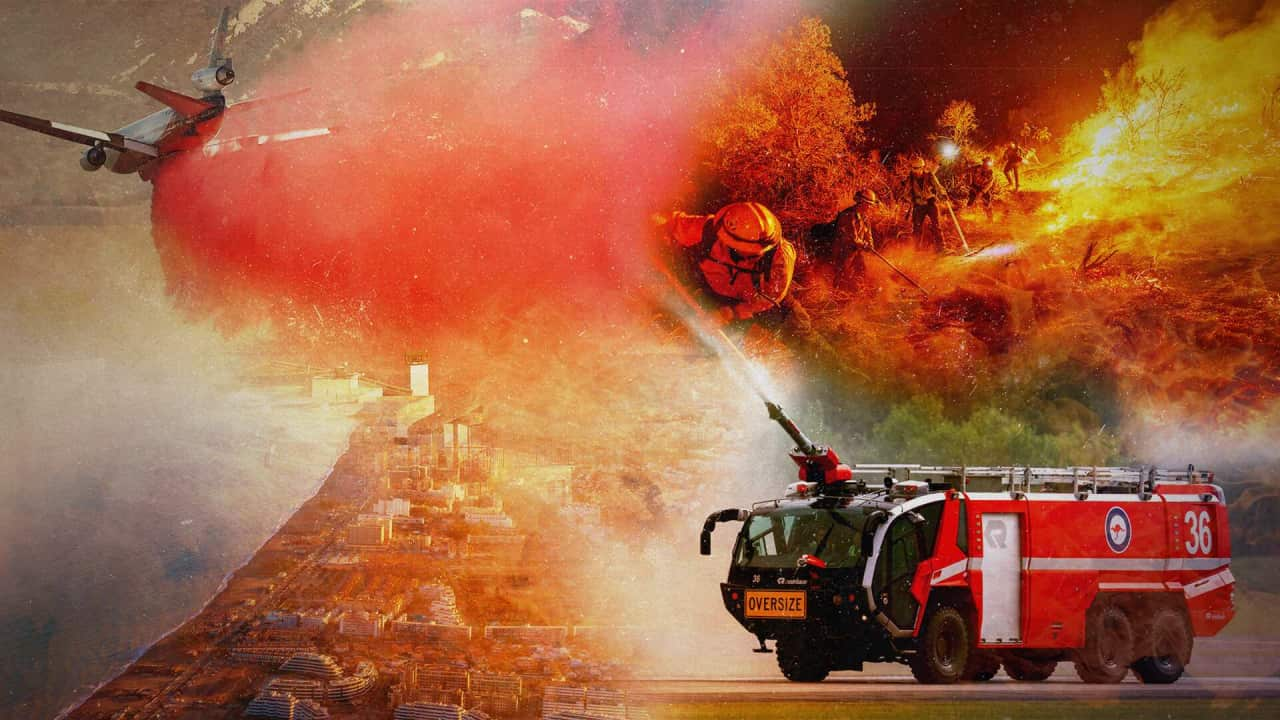A catastrophic fire warning in NSW has placed thousands of people on alert, as the country braces for hot and wet weeks ahead, leaving experts concerned about fire risk.
The warning was issued for the state for the lower central west plains — including the regional hubs of Dubbo, Parkes and Forbes.
Parts of Australia are experiencing a surge of severe weather this week, and in many regions the most intense conditions are expected to peak on Wednesday, according to the Bureau of Meteorology (BoM).
A sustained heatwave stretching from the outback to the eastern coastline is producing the highest November temperatures in several years, including in both Sydney and Brisbane, where daytime peaks are expected to surpass 35C on Wednesday and again on Thursday.
The sweltering, moisture-laden air is also energising powerful thunderstorms, bringing an added threat of large hail, torrential downpours, and damaging gusts in the days ahead.
Hamish Clarke, a fire researcher at the University of Melbourne, told SBS News there is "significant concern" about the upcoming bushfire season for some regions this summer.
"Australia is a large and diverse country, with many different climate zones, vegetation types and land use patterns," he said.
"One useful shorthand is seasonality — different places experience peak fire danger at different times of the year. Another one is major vegetation type — fire looks very different in grasslands, savannahs and arid areas compared to forests."
He pointed to the seasonal outlook created by the Australian and New Zealand council for fire and emergency services (AFAC) as an indicator for locations and likelihood of fires.
Its most recent outlook for spring 2025 said parts of Australia's east and west are at a heightened risk for fire.
"The Outlook for spring 2025 identifies a heightened risk of fire for the Dampier Peninsula, Derby Coast and the Central Kimberley, Little Sandy Desert, and south-eastern Pilbara in Western Australia, the south-eastern agricultural areas of the Murraylands in South Australia, and the south, southwest, central, and southwest Gippsland regions in Victoria," its website reads.
Warning levels
If you are in an area authorities believe could be at risk of a fire, you could be alerted via a text message or through other channels such as radio and social media.
There are three warning levels for fires in Australia: Advice (yellow), Watch and Act (orange), and Emergency Warning (red).

Source: SBS News
An Advice alert means a fire has started, but there is no immediate danger. Stay informed and monitor the situation.
When a Watch and Act warning is in place there is a heightened level of threat. Conditions are changing, and you need to start taking action to protect yourself and your family.
An Emergency Alert is the highest level of warning. You are in danger and need to take immediate action. Any delay puts your life at risk.
Looking ahead to the upcoming fire season
Clarke said that fire risk is considered "normal" in most of the country according to the seasonal outlook, but that "defining normal is complicated".
"I know from conversations with colleagues in fire agencies here in Victoria, there is significant concern about the upcoming season, based partly on how dry much of the state is, even after recent rains."
Predicting and reducing the damage caused by fires is also becoming more difficult due to environmental and human factors.
"Fire has been a part of Australian ecosystems since long before humans evolved, but humans are important factors in both increasing and decreasing risk," he said.
"For tens of thousands of years, Indigenous peoples have expertly used fire to care for Country. Unfortunately, human-caused climate change is also a factor now, making it harder for fire managers and communities."
The BoM will be releasing its seasonal bushfire outlook for summer 2025-26 on Thursday.
Share



